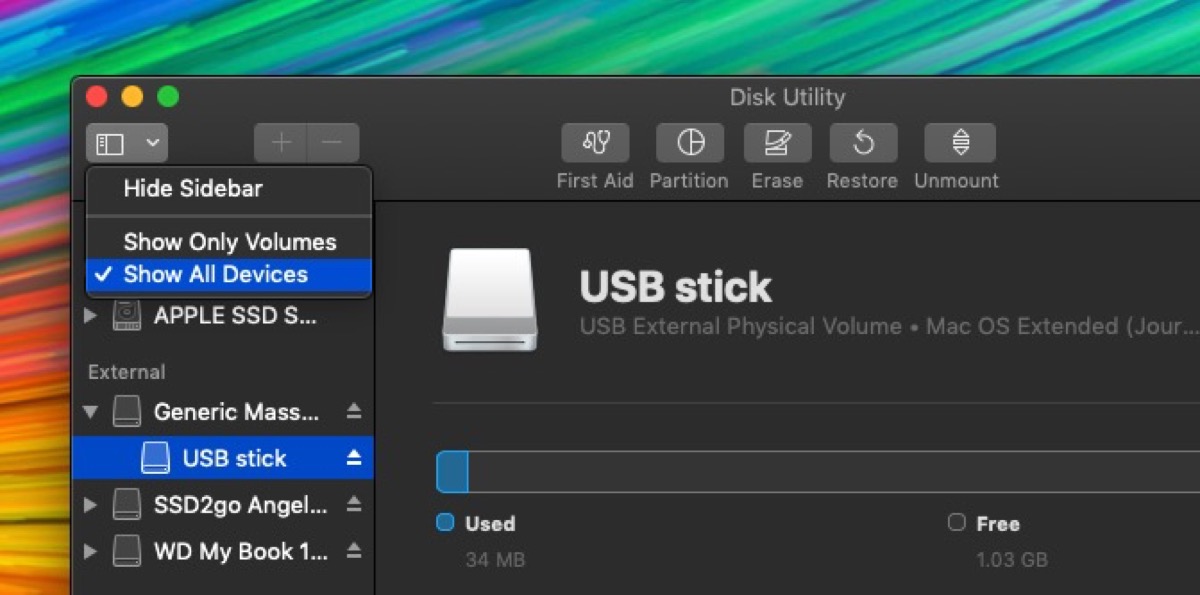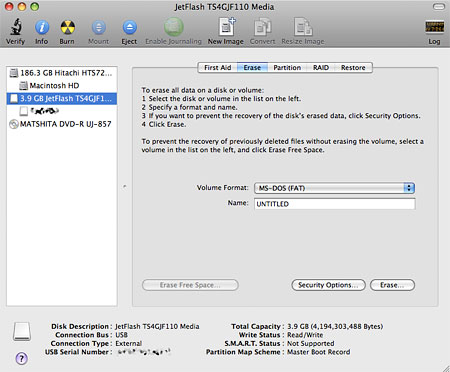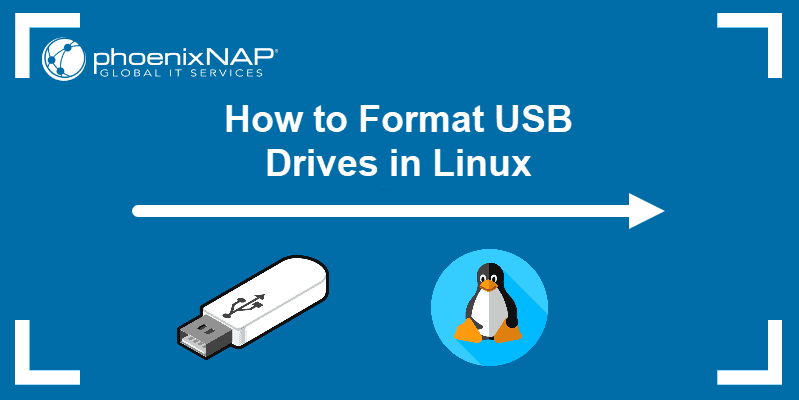

- #Format a usb flash drive for mac mac os x
- #Format a usb flash drive for mac install
- #Format a usb flash drive for mac password
- #Format a usb flash drive for mac windows

You’ll also be asked to choose between a partition scheme: GUID Partition Map, Master Boot Record, or Apple Partition Map.

RELATED: What's the Difference Between GPT and MBR When Partitioning a Drive?
It’s not natively supported on many Linux distributions, but you can install exFAT support on Linux.įor external drives, it almost always makes sense to format in ExFAT, unless you’re using the drive for Time Machine. ExFAT is the ideal cross-platform file system.
You should use this file system if you may share the drive with Windows PCs and other devices like the PlayStation 4 and Xbox One consoles. Select the drive in the left-hand sidebar.

ExFAT: ExFAT is almost as widely compatible as older FAT file systems, but doesn’t have the limitations. Launch Disk Utility (from Applications > Utilities > Disk Utility ).MS-DOS (FAT): This is the most widely compatible file system, but it has some limitations–for example, files can only be 4GB or less in size each. Avoid this file system unless you have a device that requires FAT32.OS X Extended (Case-sensitive, Journaled, Encrypted): This is the same as the standard OS X Extended (Case-senstiive) file system, but with encryption.
You’ll have to enter a password, and you’ll need to provide that password whenever you connect your drive to your Mac.
OS X Extended (Journaled, Encrypted): This is the same as the standard OS X Extended file system, but with encryption. This option exists because it matches the traditional behavior of UNIX and some people might need it–don’t select this unless you know you need it for some reason. By default, Mac OS X doesn’t use a case-sensitive file system.
OS X Extended (Case-sensitive, Journaled): On a case-sensitive file system, “file” is different from “File”. This file system is necessary if you plan on using the drive for Time Machine backups–otherwise, you’ll want to use exFAT for maximum compatibility. OS X Extended (Journaled): This is the default, but it’s only natively supported on Macs. RELATED: What's the Difference Between FAT32, exFAT, and NTFS? You’ll need to choose between several file systems: You’ll be asked to provide a name for the disk, which will appear and identify the disk when you connect it to a Mac, PC, or another device. Select the drive by clicking its name.Ĭlick the “Erase” button after selecting the entire drive to erase the entire drive and create a single partition on it. Your connected drives will appear under “External” in the Disk Utility’s sidebar. In the sheet that appears click the Partition button and your flash drive will be formatted as a Mac OS X Extended (Journaled) drive.You can also open a Finder window, select “Applications” in the sidebar, and head to Utilities > Disk Utility. Choose Mac OS Extended (Journaled) from the Format pop-up menu and click the Apply button. To do so, select the drive in Disk Utility, click the Partition tab, select 1 Partition from the Volume Scheme pop-up menu, click the Options button, choose GUID Partition Table or Apple Partition Map from the resulting sheet (GUID for Intel Macs or any Mac running 10.4 or later or Apple Partition Map for PowerPC Macs running any version of Mac OS X), and click OK. Should you desire to format the drive as Mac OS X Extended (Journaled), you’re welcome to. When copying that same folder from the flash drive to my hard drive the two were close-1 minute 36 seconds for the OS X Extended format and 1 minute and 40 seconds for the MS-DOS format. It took 7 minutes and 42 seconds to copy the folder to the drive when it was formatted using MS-DOS (FAT) and 8 minutes and 27 seconds when the drive was formatted using OS X Extended (Journaled). In fact, when copying a 2GB folder to a SanDisk U3 Cruzer Micro USB flash drive I found the opposite to be true. I’ve seen claims on the Internet that formatting these drives in the Mac OS Extended (Journaled) format speeds up transfers.








 0 kommentar(er)
0 kommentar(er)
